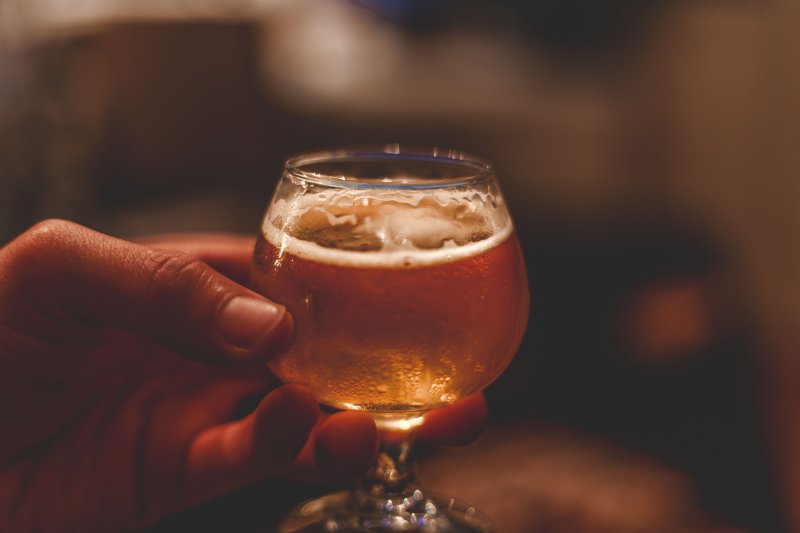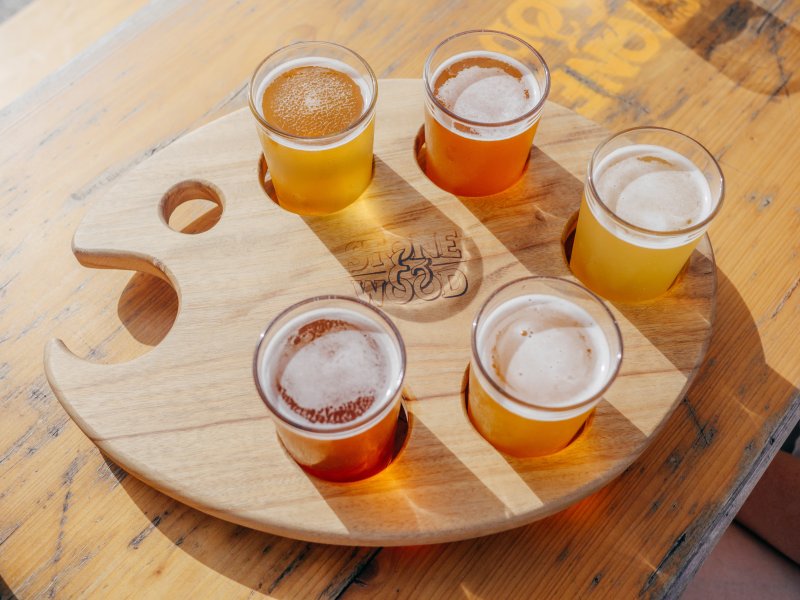Filter Search
Show available only
Categories
Price
Select all
Clear all
$0 - $10
$10 - $50
$50 - $100
$100 - $500
$500 & above
Filter Search
Show available only
Categories
Price
Select all
Clear all
$0 - $10
$10 - $50
$50 - $100
$100 - $500
$500 & above
Product is not availabe in this category, please select other category
ALL ABOUT IPA'S
During the late 1800s, beer brewers struggled to ship beers from England to India. The initial beers they sent over spoiled on the trip, so they began experimenting with different levels of ingredients and beers until they realized their October ales, which were loaded with extra hops, not only survived the journey, but aged well! The IPA, India Pale Ale, resulting from this process became a stronger, more flavorful beer with higher levels of bitterness and alcohol content than traditional pale ales. The modern IPA took a bit longer to catch on since refrigeration removed the need for drinks that could keep on a long, hot journey. Then, in 1976, American brewers started to revitalize old British styles, including the IPA. Now, IPAs offer a gamut of flavors derived from hops and herbal, citrus or fruity notes. Spanning styles like the zesty West Coast IPA, to its more traditional British cousin, and finally culminating in the smooth New England Style IPA, these beverages range from tangy citruses all through bitter robustness while also boasting high alcohol levels. Grab an IPA for your next gathering for some variety and fun!

History
IPAs first appeared in England in the late 18th century. Brewers had been making pale ales since the mid-1700s, but those beers did not have enough strength to survive the lengthy shipment from Britain to India. So, brewers experimented with different recipes, eventually settling on an IPA (India Pale Ale) recipe that included more hops and malt for preserving and flavoring purposes as well as higher levels of alcohol content for added protection against spoilage during ship transport. This new recipe proved successful. IPAs survived the journey without becoming sour or skunky like other styles of beer.
How IPAs are Made
The brewing process for IPA presents as fairly straightforward, yet complexities arise at the same time due to its multiple stages that result in a variety of flavors and aromas. The key ingredients for an IPA include pale malt, yeast, hops, and water. The malt provides the majority of sugars needed for fermentation while the yeast converts these sugars into alcohol. First, brewers create a mash out of the malt and hot water and cook it for a while. They heat up more water, which they’ll use to create the base of the beer, called the wart. This heated water gets poured over the malt and pulls out the sugars produced. After they create enough wort, brewers boil the mixture and add hops to flavor, influence aromas, and preserve the beer’s freshness. The amount of hops used varies depending on the brewer's preference, but generally it ranges from 1-2 ounces per five gallons of wort (the liquid obtained after boiling). Lastly, the wort gets left to ferment. They add yeast, agitate it, and leave it until the mixture’s bubbling subsides. After a few weeks, they bottle the remains, which should now be free from residual compounds that may affect taste or aroma.
Types of
- American India Pale Ale (IPA) - Perhaps the most popular type of IPA and one of the most common styles available, American IPAs gained recognition for their intense hop bitterness and aroma, as well as their complex flavor profiles due to the addition of citrusy American hops like Cascade, Citra, Columbus and Simcoe. These beer ABV range rests between 5% to 7%, with some higher ABV variants available.
- English India Pale Ale (IPA) - English IPAs often present a more malty flavor profile than their American counterparts due to the use of English hops like Fuggle and East Kent Golding. English IPAs tend to be less bitter than American IPAs and have an ABV range between 4% to 6%.
- Imperial/Double IPA - Imperial or Double IPAs brew significantly stronger than regular IPAs with an ABV range between 7% to 10%. These beers utilize a larger amount of hops for added bitterness and aroma, as well as additional malts for body and sweetness. Imperial or Double IPAs tend to be full bodied beers with intense hop flavors that can overpower some palates, yet that same intensity draws people to it looking for rich, unique flavors not found in other IPAs.
- New England/Northeast Style IPA - New England or Northeast style IPAs produce hazy and unfiltered ales with unique flavor profiles created by using juicy New World hops like Amarillo, Citra, Mosaic and Simcoe. These beers typically make great introductions into the IPA family with low bitterness levels and a soft mouthfeel created by the addition of wheat or oats during brewing. New England or Northeast style IPAs usually brew at an ABV range between 4% to 8%.
- Session IPA - Session IPAs taste less bitter than other types of IPAs and carry a lower alcohol content. This makes them ideal for drinking during extended periods such as at sporting events or family gatherings. Session IPAs typically brew at an ABV between 4 to 5%, so you can enjoy a few without getting too drunk too quickly! They also tend to present light in color with subtle fruity aromas and flavors.
WHAT DO IPAs TASTE LIKE?
IPA’s distinctively hoppy flavor can range from mild to intensely bitter depending on how much hops were used during brewing. Other predominant flavors include floral notes from traditional European hops such as Saaz or Hallertauer Mittelfrüh as well as citrusy notes from US-grown varieties such as Cascade or Centennial. Some brewers may also choose to add additional ingredients such as fruit juices or spices for added complexity and depth of character. When tasting an IPA, look for characteristics like the balance between malt sweetness and hop bitterness. Aroma notes vary between flavors such as citrusy oranges, pine needles, floral blossoms, while flavors draw from the herbs, spices, and hops used, varying from a bitter pininess to citrusy, fruity flavors nuanced with caramelized sugar or roasted nuts. Depending on the IPA tasted, the aftertaste ranges from lingering hoppy bitterness to slight sweetness.

How to Drink IPAs
When served in the correct glassware, IPAs present a golden-orange hue with good clarity. The thick and creamy head retains flavor throughout the drink. On the nose, drinkers should expect a strong hop aroma with notes of citrus, pine, floral, stone fruit, or herbal characters depending on the hops used in the brewing process. IPAs taste the best at temperatures slightly cooler than room temperature (45-50° F) in a tulip glass or pint glass that allows for proper head retention and aromatics to be released as it’s being consumed. Additionally, pairing IPAs with foods such as spicy curries or cheeses can help mellow out some of the more intense hop characters while also accentuating their subtle nuances.
What Makes IPA Popular?
India Pale Ale (IPA) popularity exploded over the past fifteen years. It deserves its reputation as one of the most popular beer styles among both brewers and drinkers alike. IPA’s versatile nature allows brewers plenty of room for experimentation in taste and potency while its historical roots give it a sense of nostalgia that many craft beer enthusiasts appreciate. Its high alcohol content offers drinkers more bang for their buck while complex hop profiles provide an array of interesting aromas and flavors that make each sip unique. All these factors contribute to making IPA one of the most popular craft beers.
Please select your delivery location for us to get the order deliver faster.
Home
Cart
Profile
Location
